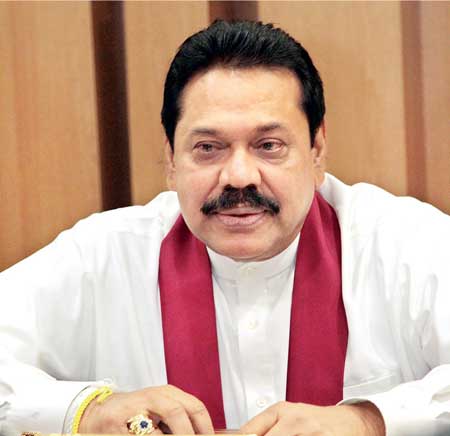A Brief Colonial History Of Ceylon(SriLanka)
Sri Lanka: One Island Two Nations
A Brief Colonial History Of Ceylon(SriLanka)
Sri Lanka: One Island Two Nations
(Full Story)
Search This Blog
Back to 500BC.
==========================
Thiranjala Weerasinghe sj.- One Island Two Nations
?????????????????????????????????????????????????Tuesday, March 29, 2016
Truth behind the $ 6,361 loans of the present Government
The calculation of the $ 6,361 in loans
Rajapaksa’s calculation of the $ 6,361 million the present Government borrowed is as follows:
1. Currency swap of $ 400 million in March 2015 and $ 1,100 million in May 2016. So in currency swaps, the total is $ 1,500 million.
2. International Sovereign Bond of $ 650 million in May 2015 and another $ 1,500 million ISB in October 2015. So in ISBs, the total is $ 2,150.
3. Sri Lanka Development Bonds totaling $ 2,711 during the tenure of the new Government.
So, adding together all of the above Rajapaksa comes up with the grand total of $ 6,361 million ‘debt’ that the present Government got into in the last 15 or so months. Let us analyse them one by one.

Currency swaps
What is a currency swap? It is a swap; meaning an exchange. In a central bank currency swap, two central banks exchange a particular currency with another with an agreement to unwind that swap at a given date at a given exchange rate and or a given interest rate.
India has such swap agreements with each SAARC country for up to $ 2,000 million on which they can draw if needed. In fact, during Rajapaksa’s rule, in September 2014, Sri Lanka also entered in to a $ 1,600 million (or Yuan 10 billion) swap agreement with China.
While most of the time currencies are exchanged, sometimes they are not, but is structured as a short-term loan to be paid back with interest. In the recent case of India, I understand it was the latter.
These short term exchanges are, for the most part, used to either tide over currency pressure or to directly settle bilateral trade transactions. And these take place all the time around the world. As at present US, Canada, Euro Area, Switzerland, Japan, Australia, China, Australia, UK, India, Brazil, Singapore, Indonesia, Pakistan, Korea besides Sri Lanka and dozens of others have various swap agreements between and among them. They utilise them based on need.
The accusation by the former President
Former President Mahinda Rajapaksa has been repeating ad nauseam over the last few weeks that the present Government has taken $ 6,361 million in foreign loans in its 15-month lifespan thus far but hadn’t even built a culvert with that money.
He says that he could have built two Mattala Airports, one Hambantota Port, one Norochcholai Coal Power Plant, one Colombo-Matara Highway, one Colombo-Katunayake Highway, not one, but two Colombo Port cities and one 500 MW Sampur Coal Power Plant with that money.
Finally, he says that the present Government is incapable of running the country and that he should be given the opportunity once again to ‘rescue’ Sri Lanka.
Former President Mahinda Rajapaksa has been repeating ad nauseam over the last few weeks that the present Government has taken $ 6,361 million in foreign loans in its 15-month lifespan thus far but hadn’t even built a culvert with that money.
He says that he could have built two Mattala Airports, one Hambantota Port, one Norochcholai Coal Power Plant, one Colombo-Matara Highway, one Colombo-Katunayake Highway, not one, but two Colombo Port cities and one 500 MW Sampur Coal Power Plant with that money.
Finally, he says that the present Government is incapable of running the country and that he should be given the opportunity once again to ‘rescue’ Sri Lanka.
The calculation of the $ 6,361 in loans
Rajapaksa’s calculation of the $ 6,361 million the present Government borrowed is as follows:
1. Currency swap of $ 400 million in March 2015 and $ 1,100 million in May 2016. So in currency swaps, the total is $ 1,500 million.
2. International Sovereign Bond of $ 650 million in May 2015 and another $ 1,500 million ISB in October 2015. So in ISBs, the total is $ 2,150.
3. Sri Lanka Development Bonds totaling $ 2,711 during the tenure of the new Government.
So, adding together all of the above Rajapaksa comes up with the grand total of $ 6,361 million ‘debt’ that the present Government got into in the last 15 or so months. Let us analyse them one by one.

Currency swaps
What is a currency swap? It is a swap; meaning an exchange. In a central bank currency swap, two central banks exchange a particular currency with another with an agreement to unwind that swap at a given date at a given exchange rate and or a given interest rate.
India has such swap agreements with each SAARC country for up to $ 2,000 million on which they can draw if needed. In fact, during Rajapaksa’s rule, in September 2014, Sri Lanka also entered in to a $ 1,600 million (or Yuan 10 billion) swap agreement with China.
While most of the time currencies are exchanged, sometimes they are not, but is structured as a short-term loan to be paid back with interest. In the recent case of India, I understand it was the latter.
These short term exchanges are, for the most part, used to either tide over currency pressure or to directly settle bilateral trade transactions. And these take place all the time around the world. As at present US, Canada, Euro Area, Switzerland, Japan, Australia, China, Australia, UK, India, Brazil, Singapore, Indonesia, Pakistan, Korea besides Sri Lanka and dozens of others have various swap agreements between and among them. They utilise them based on need.

